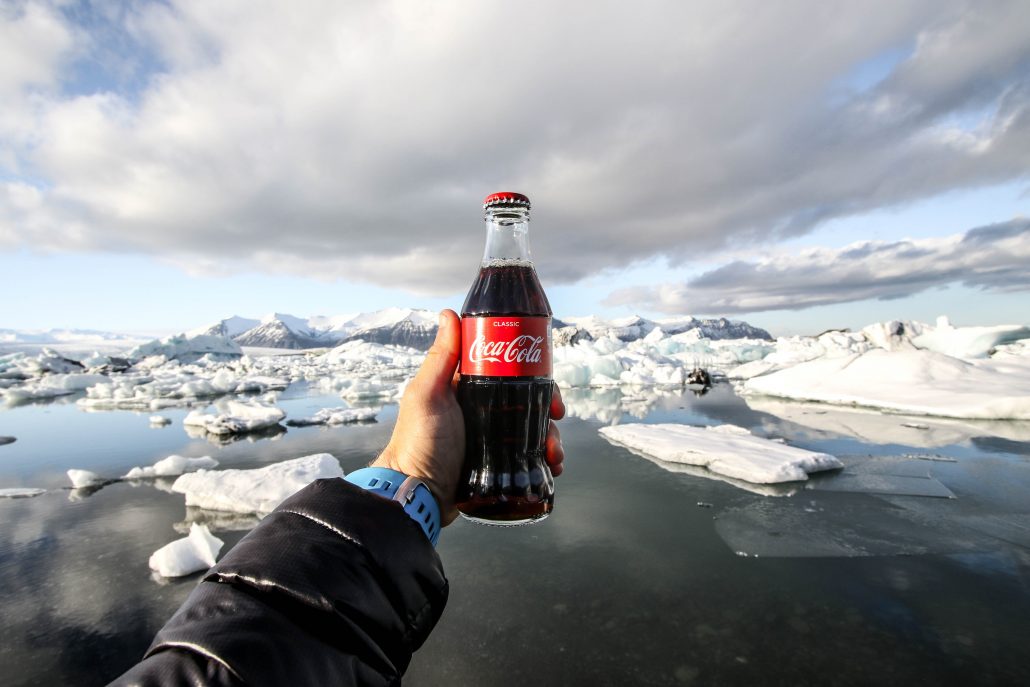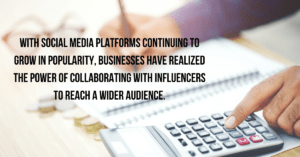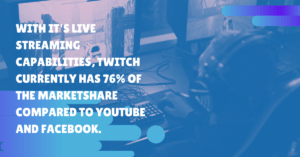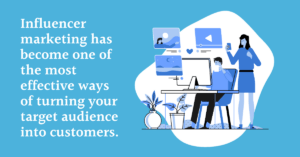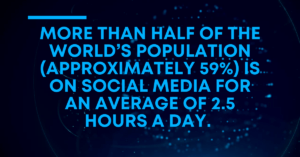Here at Sideqik we think our customers know best. Ahead of publishing our case study with Coca-Cola, we sat down with Alban Dechelotte, Coke’s Senior Marketing Manager in charge of entertainment to talk about how they use influencers to see huge results.
Sideqik: How long has Coca-Cola been involved in Influencer Marketing?
Alban Dechelotte: For 130 years. It’s difficult to find everything in the archives, but if you look in I think it was 1912 there’s already some proof that we had an ambassador. It was Hilda Clark. So today, we partner with social influencers who are pro gamers. But in 1912 she was a singer in Operetta because that was in fashion at the time.
So basically, we have been using celebrities in our ads since forever and the first one was a singer but moving ahead it has been athletes, it has been movie stars, it has been everything and today it has been social influencers.
What would you say your strategy is as you work with influencers? How does that add to Coca-Cola’s marketing?
I think it has to come back to the initial thinking of connecting with people through the lens of what you like. That’s super specific to Coke because everyone talks about the secret formula but actually, it’s a super important ingredient of what we have been doing for 130 years.
Coming from music, movies, we have been the first brand to be featured in a movie, from Charlie Chaplain, going to the Olympics, going to sports and you know basketball and Baseball, FIFA. So all we try to do with all these long lists is connect with people through the lens of what they like.
So people of today, and if you think of the next generation, the new generation of digital natives, they love gaming, they love their YouTubers — their vloggers. And what we try is to be all of it.
It’s a brand that is 130 years old. That means my parents drink it. My grandparents drink it. And if I’m a teen, that’s something I don’t like. So we don’t change that much of the product, we change the marketing around it to be specific to each generation by connecting product at every single generation with the thing that is most relevant to them. So today, it’s gaming, today its social influencers … but I think the way we use influencers is to connect our product to the next generation.
Is it hard to market Coca-Cola since its such a ubiquitous brand? Is that a challenge?
For people like you who are drinkers already, no. But for people that don’t drink us, yes! Because it’s a product and a brand that’s so well known, that people say “I love it” but they don’t drink it.
So we have a very specific challenge that is not the traditional, what we call the purchase phenomena. First, you have to be known, then you have to be loved, then you have to drive attention for purchase and then you have to drive repeat purchases. That’s the traditional purchase funnel.
We don’t have this challenge because you know what awareness? Not a problem. Availability? Every single store on the planet. Taste? People love the taste and people love the brand, so what’s up? Why don’t they drink us more? Well, because you know various reasons. There’s much more competition than ever, direct and indirect, like new ways of consuming food that doesn’t taste good or they don’t see associated with our product so it’s all about being all of it and reframing when and how to drink Coke.
So if you look at our marketing campaigns over the last few years, it’s a lot about showing cool people, glamorous people, drinking Coke in different situations. We told the world what it means to enjoy Coke. That’s the core. How we do that? Advertising.
We also try to relearn how to use these magic ingredients of passion points to do it again. And in the past, we were using these passion points to create brand love, so doing cool stuff in football, doing cool staff in music — it’s not enough. So how can we make sure that the people we most care about — the singers, the designers, the athletes — drink Coke and enjoy it so that the people that love them see this as an example.
How did Coca-Cola and Sideqik get connected?
I gave a speech about eSports at a conference and one guy came to me and said, “hey, I’ve got something for you!” And I was like, “I don’t think so,” — as I do always, — “but I’m going to hook you up with my team and see if this is something that could help us.”
And it was amazing. I’ve never seen a tool that was that simple to use, that is not only easy to use, but also gives us very accurate information to show us what happened, when, and what did it generate for us. Also, we have been able to work as a team with Sideqik’s people to adapt the tool to our needs not only in terms of data but in terms of usage. Like how my team, which is based both in Coke with an agency in Atlanta and an agency in Paris, is able to work together with a single tool. That is three things that I really like, simple to use, really flexible in the way you get access to the data, and also the capacity to adapt the tool to what we need.
What are your influencer marketing pain points?
I think it’s a balance between scale and relevancy. Because there are a lot of big influencers that have the scale that is requested by a brand like that and there is also a lot of different ways to get to different geographies, ethnicities, genders that you try to get, but at the same time you need to be able to track it and combine it.
Where do you see the future of influencer marketing going?
We’ve built kind of an approach that is super efficient in this vertical, and one of the keys to success is we have been very authentic in the way we engage with influencers. We’re not always trying to pay them to do something we want, but really earning them and being able to track the results was really key to that.
The challenge for me is how do we adapt that to food, fitness, sports, fashion, and see if we can duplicate this which probably won’t be duplication but actually be an adaptation to a different vertical with some key learnings.
How does Coca-Cola interact with influencers?

We try to surprise and delight influencers instead of just acquiring their shared voice, and to do that it starts with surprise and delight.
Initially, when these influencers are happy, they share it with their friends and followers and for us, that’s a return on investment because it’s a way to generate some social capital about the brand in a positive way.
The gaming vertical has been earned first, paid second, where most other verticals are paid first, earned second if any earned. We’re trying first to build some processes on how to learn from each other.
It’s easy to send a gaming influencer a coke bottle with their gamer tag, but I imagine it’s harder with say a singer.
I’m working on a [gift] box around the FIFA world cup. Obviously, since the [the game, FIFA ’18] will be old already, it’s not about the game, it’s about the packaging you receive to celebrate the beginning of the World Cup, and probably were going to not do gamers. The target will be YouTubers, people who are casual but not gamers. The content will be probably a combination of football, gaming, and music — art from Coke, the game itself, as well as other stuff so basically a package to host your viewing party. Not strictly about gaming. That’s a good example of how we try to stretch what we have learned.
How important is it to measure the intangible concept of ‘surprise and delight’? 
My background is, I’ve been working in the fashion industry, you know Adidas and also fashion brands like Lacoste and in this world this is a common practice. Not everybody on the red carpet is a paid ambassador for a brand, and still, they wear the dresses, which is a valuable exposure for the brand. So basically, I suggested we go for an earned strategy so instead of paying 5x we engage 100 of them and the trick is how do you know if it’s better to have 500 [influencers].
Well, measurements: how many posts did we get, and what is the impressions that these posts are generating, versus the amount we could have generated with five paid influencers, that’s the answer and I think the Sideqik tool helped us to compare. Because we have this mental idea of comparing the general impression and engagements to how much it could have cost in terms of media to get the same impressions and engagement.
How do you ensure that people are not developing relationships with influencers who are past their prime?
It’s 80/20. You don’t want to have a system where 100 percent have to go through the same person to be approved, because then you become a bottleneck, but we’ve got to create some processes to make sure we don’t do stupid things like calling a person twice for two different brands, or paying twice the price, or not vetting the assets we discover with like an ambassador type program, those simple things. And if 80 percent of people are well-intentioned they will follow the process and we will have better outcomes for the same investments. If 20 percent of people are not aware of the process or not intentionally following the process, then it will be a great win already because 80 percent do.
What is some data around influencers that you haven’t seen that you would like to see?
I think its very easy now based on my great partnership with Sideqik to measure the impact of pre-recorded content, as in posts and videos, things like that, with a live tracking of what is the impact of impressions and engagements — that is simple. I think that it’s hard still to measure the impact of live-streaming and perishable content which are becoming more and more important in social media. So I think that’s the ultimate challenge to the team to keep on track with this new media, creating a tool that enables us to measure the same way we have been able to with other things. We don’t need to measure things that are not big, but Snapchat is. So how do we make sure that what is big is also tracked?
Tell me a little about this Coca-Cola case study and the concept behind it.
Basically, there’s like one million influencers — or people who think they are influencers — in video games. You try to select who are the ones that are the best for us. So there are simple questions such as popular or not, the right geographies or not, the right games or not, but you don’t always know if they love the brand, they drink the product, all these things that are so important to us, so what we decided to … we try to have kind of a funnel of selection.
The first step is identifying the biggest influencers. That’s simple, we use your tool to do that. As I said, popularity, play the game, blah blah. The second step is like how do we test them, interact with them. So for that, the recruitment strategy is actually a gifting strategy. So we send a box to 100 of them, and we look at the quality of the content they produce, how they react personally, how do the fans react to it, and of course the number of impressions and media performance of impact. All that enables us to select the right one. So we select 10 percent of them. And this 10 percent we try to extend the relationship beyond the relationship that started all of this.
It’s like a date. Basically, you start to have some small gifting strategy. This starts with maybe some product, maybe some bottles with your name on it, up to becoming like a fridge in your bedroom. We probably deliver every 3 months. So we are kind of trying to build a roster. So imagine 10,000, to 100, to 10, to 5, and these 5 are kind of the [influencers] we always keep on. They’re not paid, but it’s kind of a roster of friends of the brand. Every time there’s a campaign … or [Coke] wants talent, we push [those 5 influencers] first.
What is interesting in the relationship is that all of that is not public, like not even shared with them. We managed this because we are aiming for scale. So we have the steps and these meetings about who goes to the second stage or not, but we don’t tell the influencers. Because if we tell them it kind of like, it breaks a little bit of the relationship.

